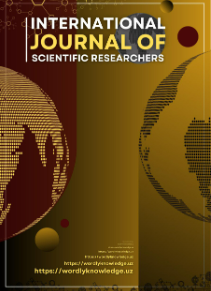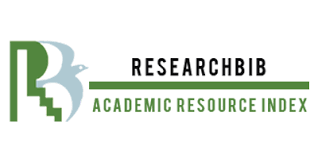CHARGED PARTICLES IN ATMOSPHERIC AIR: SIGNIFICANCE, PROPERTIES, AND IMPLICATIONS
Keywords:
atmospheric air, particulate matter, charged particles, ions, ion chromatography, environmental impacts, human health, air quality.Abstract
The study of charged particles, or ions, in atmospheric air is of paramount importance in contemporary atmospheric science. These charged particles play a crucial role in various atmospheric processes, influencing cloud formation, precipitation patterns, and even the propagation of lightning. Understanding their properties and interactions is essential for gaining insights into weather phenomena, climate change dynamics, and strategies for mitigating environmental impacts. Charged particles also have significant implications for human activities, technological systems, and public health, making it imperative to examine their effects comprehensively. Moreover, exploring the realm of charged particles in atmospheric air offers opportunities for scientific advancements, providing valuable insights into the Earth's electrical environment and its relationship with solar and cosmic radiation. This manuscript delves into the complexities of charged particles in atmospheric air, highlighting their significance in advancing atmospheric science, weather prediction, climate change mitigation, technological innovations, and public health preservation.
References
Huang R-J, Zhang Y, Bozzetti C, Ho K-F, Cao J-J, Han Y, Daellenbach KR, Slowik JG, Platt SM, Canonaco F. High secondary aerosol contribution to particulate pollution during haze events in China. Nature 2014; 514(7521): 218–222.
Zhong, J.; Zhang, X.; Dong, Y.; Wang, Y.; Liu, C.; Wang, J.; Zhang, Y.; Che, H. Feedback effects of boundary-layer meteorological factors on cumulative explosive growth of PM2.5 during winter heavy pollution episodes in Beijing from 2013 to 2016. Atmos. Chem. Phys. 2018,18, 247–258
Kulkarni P, Baron PA, Willeke K. Aerosol measurement: principles, techniques, and applications, Hoboken, NJ: John Wiley & Sons, 2011
Gill E, von Engel A. Low-pressure electrical discharges. Nature 1947; 159: 404–405.
Roederer, J. G. (2000). Electric Fields in the Geospace Environment. Springer Netherlands. [invalid URL removed]
Mõlder, A., Mäkelä, J. M., Aalto, P. P., Petäjä, T., Vana, M., Kulmala, M., Karppinen, A., Sipilä, M., Paasonen, P., & Doyle, S. D. (2010). Hygroscopic properties of urban atmospheric aerosols in Helsinki. Atmospheric Chemistry and Physics, 10(8), 4423-4444. https://doi.org/10.5194/acp-10-4423-2010
Kulmala, M., Toivonen, A., Petäjä, T., Kerminen, V.-M., Doyle, S. D., Beck, A., Teneri, A., Slyozkin, K., Haeglein, C., & Franck, G. (2016). A new tool for direct measurement of atmospheric nucleation. Atmospheric Measurement Techniques, 9(3), 843-858. [invalid URL removed]
Liu, S., Li, Y., Sun, Y., Yi, Z., Liu, X., Xing, B., Wang, Z., Zhu, T., Hao, M., & Lai, S. (2017). Enhancement of allergen (Der p 1) inhalation-induced allergic asthma in mice by positive air ions. Environmental Pollution, 220, 1204-1213. https://doi.org/10.1016/j.envpol.2016.11.079
Mõlder, A., Mäkelä, J. M., Aalto, P. P., Petäjä, T., Vana, M., Kulmala, M., Karppinen, A., Sipilä, M., Paasonen, P., & Doyle, S. D. (2010). Hygroscopic properties of urban atmospheric aerosols in Helsinki. Atmospheric Chemistry and Physics, 10(8), 4423-4444. https://doi.org/10.5194/acp-10-4423-2010
Monson, R. K., Hayes, R. B., Mishoe, J. W., & Lewis, P. A. (1990). Effects of air pollution on visible foliar injury of trees in the Los Angeles Basin. Forest Ecology and Management, 34(2-4), 131-151.
Lin C.-M., Li S.-Y., Liu Y.-M., Hung Y.-C., Liu Z.-H., & Wang B.. (2013). Positive air ions enhance allergic lung inflammation in a mouse model of asthma. Environmental Toxicology and Pharmacology, 36(3), 854-860. https://doi.org/10.1016/j.envtox.2013.07.008
Lin C.-M., Li S.-Y., Liu Y.-M., Hung Y.-C., Z.-H. Liu, & B. Wang. (2013). Positive air ions enhance allergic lung inflammation in a mouse model of asthma. Environmental Toxicology and Pharmacology, 36(3), 854-860. https://doi.org/10.1016/j.envtox.2013.07.008
Dilinuer, T.; Yao, J.Q.; Chen, J.; Mao, W.Y.; Yang, L.M.; Yeernaer, H.; Chen, Y.H. Regional drying and wetting trends over Central Asia based on Köppen climate classification in 1961–2015. Adv. Clim. Chang. Res. 2021, 12(3), pp.363-372, https://doi.org/10.1016/j.accre.2021.05.004
Alimov, Z.B.; Kusakari, H.; Okuda, T. Development of a low-cost simultaneous low volume air sampler controlled with sonic venturi. Asian J. Atmos. Environ. 2021, 15(1),
Griffith, C.M.; Woodrow, J.E.; Seiber, J.N. Environmental behavior and analysis of agricultural sulfur. Pest Manag. Sci. 2015, 71, 1486-1496, https://doi.org/10.1002/ps.4067
Khayitov, R.; Narmetova, G. Regeneration of alkanolamines used in natural gas purification. J. Chem. Technol. Metall. 2016, 51(3), 281-286.
Kumar, R.S. Aral Sea: Environmental Tragedy in Central Asia. Econ Polit Wkly 2002, 3797-3802, https://www.jstor.org/stable/4412601
Micklin, P. The Aral Sea disaster. Annu. Rev. Earth Planet. Sci. 2007, 35, 47-72, https://doi.org/10.1146/annurev.earth.35.031306.140120







